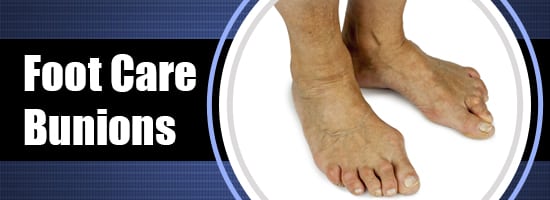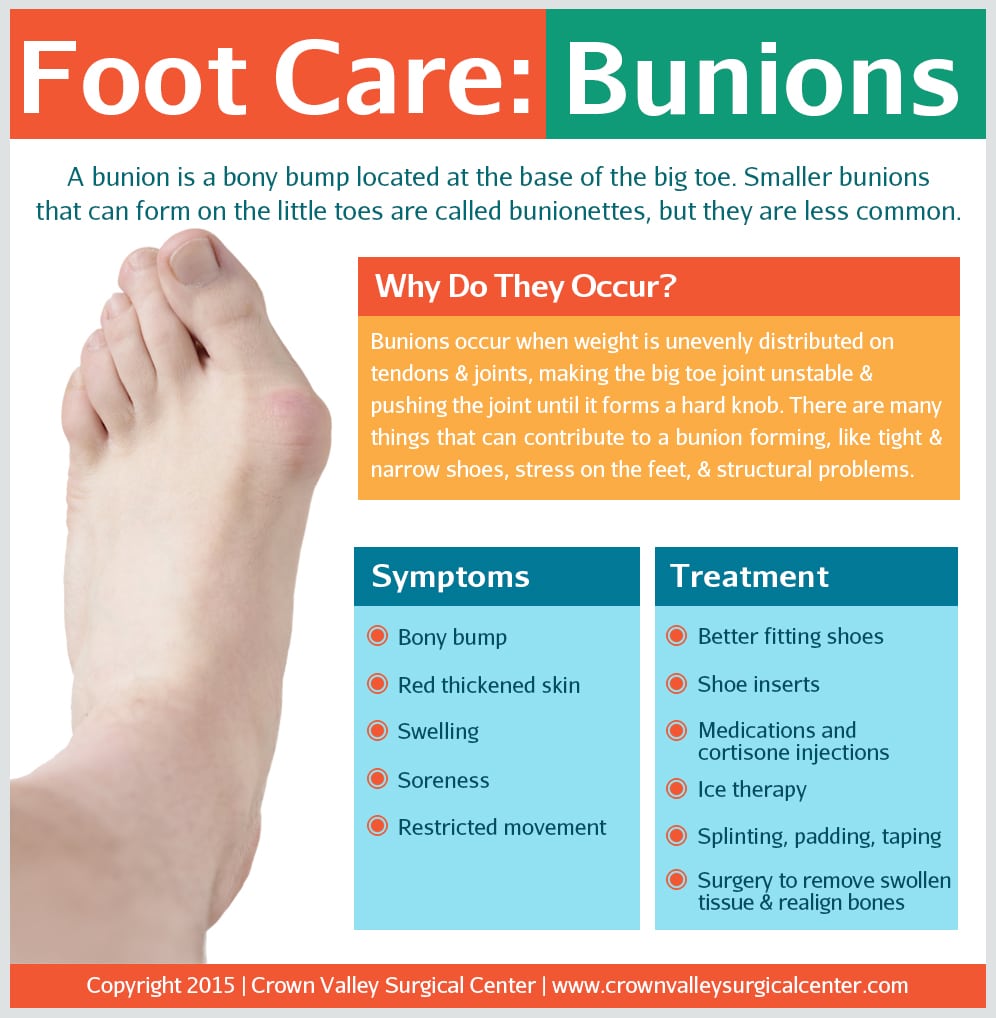Foot Care: Bunions

A bunion is a bony bump located at the base of the big toe. Smaller bunions that can form on the little toes are called bunionettes, but they are less common.
Bunions occur when weight is unevenly distributed on tendons and joints, making the big toe joint unstable and pushing the joint until it forms a hard knob. There are many things that can contribute to a bunion forming, like tight and narrow shoes, stress on the feet, and structural problems. It is also more common in patients with some conditions, like arthritis.
What are the symptoms of bunions?
The most obvious sign of a bunion is a large bump at the base of the toe, but additional symptoms include red thickened skin, corns and calluses where the toes overlap, swelling, soreness, and restricted movement.
Bunions are diagnosed with examination. The doctor may evaluate the toe’s range of motion and use an x-ray to see how severe the bunion is, or if there are any underlying structural problems causing it.
How are bunions treated?
Medical treatment is not required for bunions, but a doctor should be seen if there is persistent pain, decreased movement, or if it is hard to find shoes that fit.
The best treatment for bunions depends on the level of pain involved. For some patients, better fitting shoes can help. Shoe inserts can distribute weight evenly, and medications and cortisone injections can relieve pain. Ice therapy can relieve inflammation, and padding, splinting, and taping can reduce stress and pain.
Surgery may be an option if there is no relief from conservative methods and can involve removing swollen tissue, removing parts of bone, and realigning the bones. Properly fitting shoes are very important, especially after surgery, in order to keep the problem from returning.


